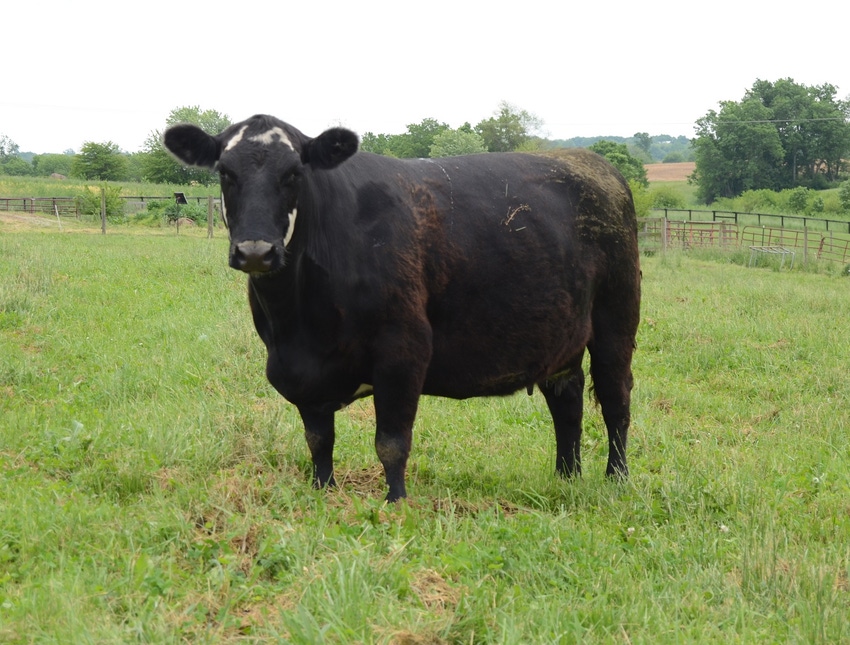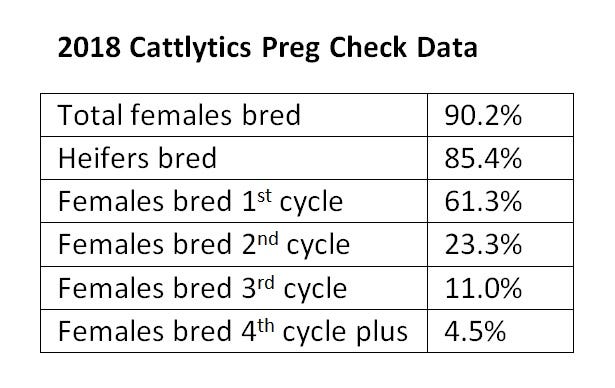December 2, 2019

What can we learn at the morning coffee chat at the local cafe? We can learn a lot of things, but probably not the whole story.
For example, how often have you heard someone boast their calves are “50 pounds more than average” this fall, or 100% of their cows bred? From such boasts, we may start to wonder what we should expect from our cattle.
We like to think we’re doing a good job, but we tend to think we don’t have much to compare to except coffee-shop talk. The truth is that averages have already been developed; some through survey and others through data collection. If we know what’s normal in cow-calf production, we can see how we stack up and what we should focus on changing.
The charts I'm presenting here are three sets of data that feature averages for some of our basic production parameters. The reason for choosing these three is they are closely related to profitability—how many cows are bred, how many of those cows weaned a live calf and how big were those calves. The mortality and weaning data was collected through the National Animal Health Monitoring Survey (NAHMS) in 2008. The preg check data was collected by veterinarians eastern South Dakota through the Cattlytics data collection system at the time of preg check.

Before you start either patting yourself on the back or feeling blue from below-average performance, notice the most important number for a cow-calf operator is not on this list. What number is that? Return on investment.
We can manipulate our management practices to “beat” every value on this list, but every change we make comes at a cost. The best way to use this information is to take a look at this data, compare it to ours and ask what we can change in our operation that would produce the most financial reward.
For example, we may have a post-birth, pre-weaning mortality of 5% or more. It would be highly profitable to move that back down to 3.2% or lower. To do this, we have to seriously ask ourselves what will cut our death loss in half. Likely, this isn’t going to be solved with a syringe, though it is good to talk with your veterinarian about the situation. We may need to move our calving season or location, or perhaps our ability to timely identify sick animals needs improvement.

On the other hand, using this data erroneously could hurt our profitability. You can increase weaning weight through creep feeding or breeding larger cows, but your return on those changes may be less than the extra pounds on the calves. It may increase your “street cred” at morning coffee, but decreasing your bottom line is not worth the bragging rights.

That being said, if you are weaning calves at 200 days of age and they are significantly less than 500 pounds (especially if you have 1,200- to 1,400-pound cows), this is an area where you should focus your energies. Because calf weight is a function of age and nutrition, consider your pasture or breeding management as likely places to start making changes. Calves will be light weight if they were born late, which means you need to tighten up your breeding season, or if the grass was too short to support good calf growth.
In summary, morning coffee may be entertaining, but it is not the best place to learn what to expect from your cow herd. Take these averages and compare your herd against hard data. From there, you can look at ways to do things differently that make large changes in your bottom line.
About the Author(s)
You May Also Like






